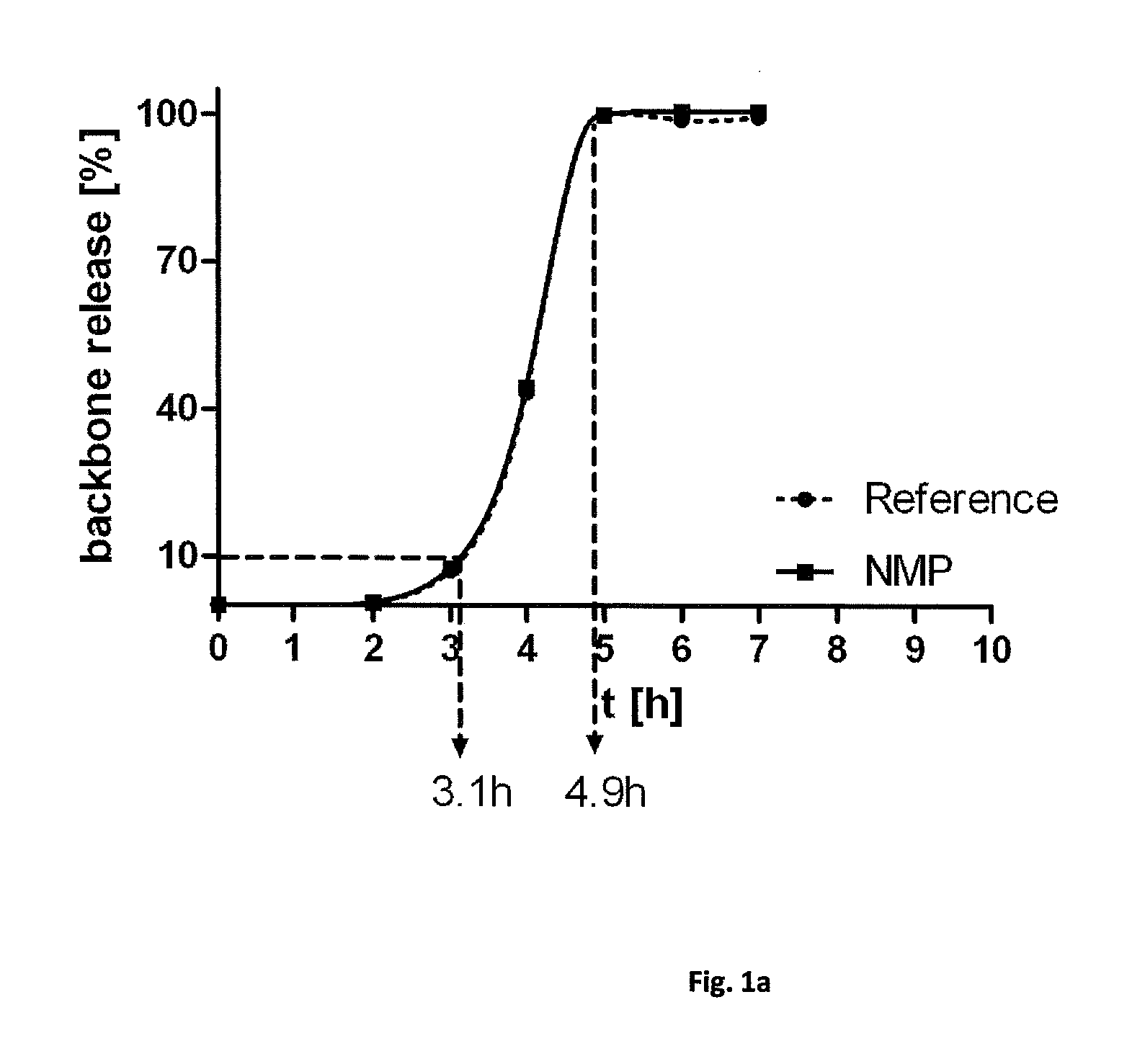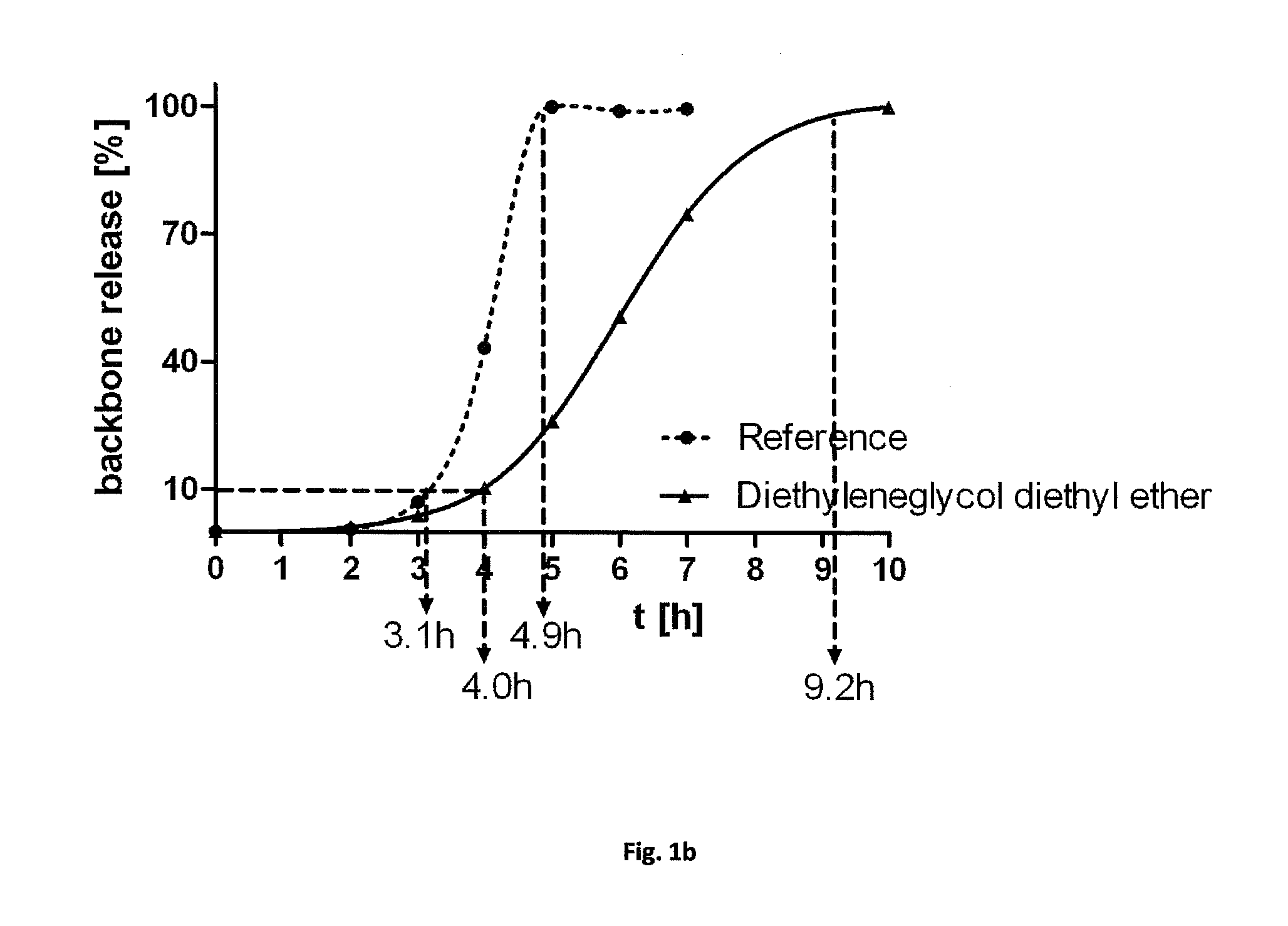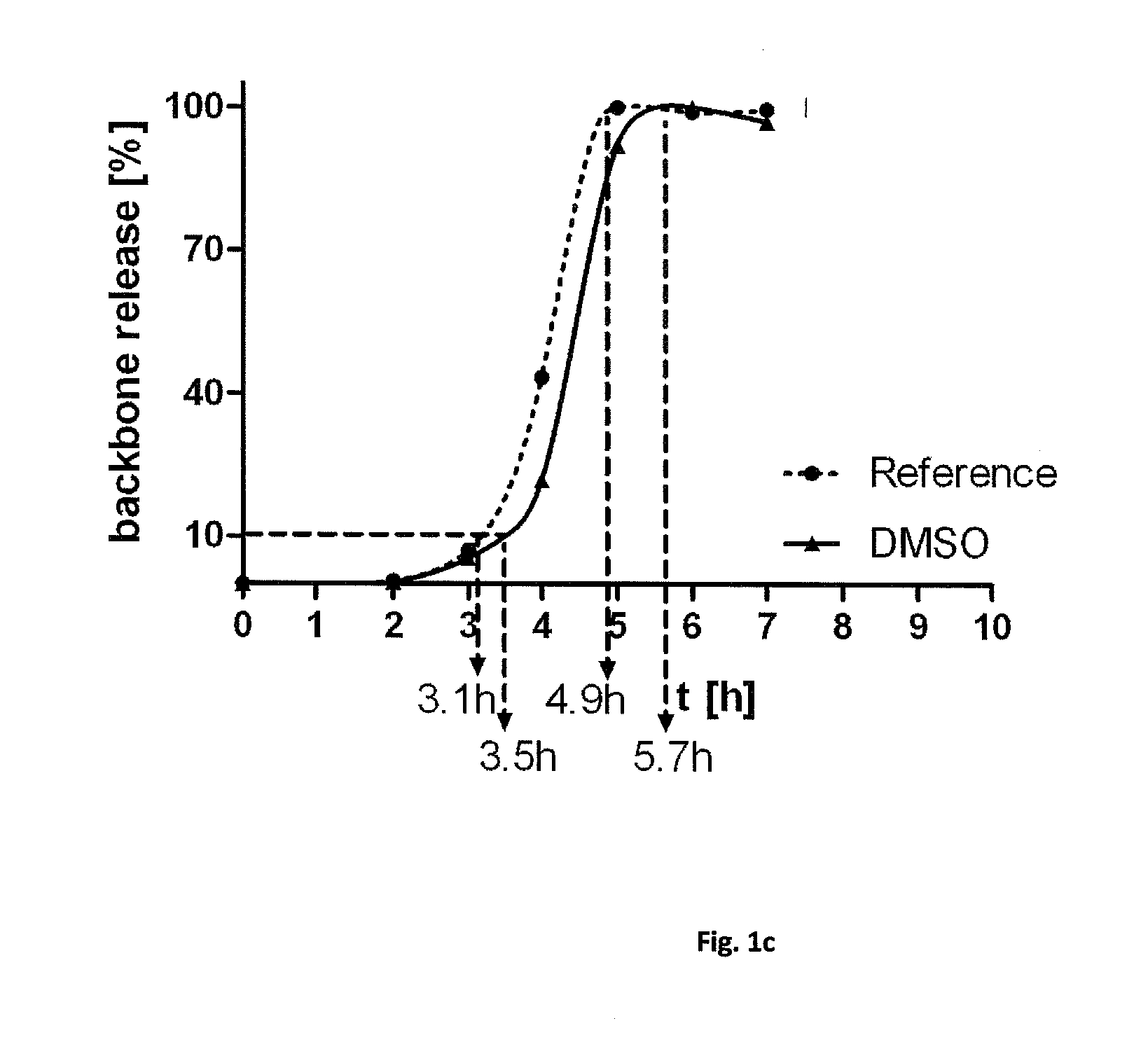Sterilization of biodegradable hydrogels
a biodegradable hydrogel and sterilization technology, applied in the field of sterilization of biodegradable hydrogels, can solve the problem of limiting the industrial applicability of drugs, and achieve the effects of improving facilitating removal, and enhancing the physicochemical or pharmacokinetic properties of drugs
- Summary
- Abstract
- Description
- Claims
- Application Information
AI Technical Summary
Benefits of technology
Problems solved by technology
Method used
Image
Examples
example 1
Synthesis of Backbone Reagent 1g
[0129]
[0130]Backbone reagent 1g was synthesized from Amino 4-arm PEG5000 1a according to following scheme:
[0131]For synthesis of compound 1b, 4-Arm-PEG5000 tetraamine 1a (MW ca. 5200 g / mol, 5.20 g, 1.00 mmol, HCl salt) was dissolved in 20 mL of DMSO (anhydrous). Boc-Lys(Boc)-OH (2.17 g, 6.25 mmol) in 5 mL of DMSO (anhydrous), EDC HCl (1.15 g, 6.00 mmol), HOBt.H2O (0.96 g, 6.25 mmol), and collidine (5.20 mL, 40 mmol) were added. The reaction mixture was stirred for 30 min at RT.
[0132]The reaction mixture was diluted with 1200 mL of dichloromethane and washed with 600 mL of 0.1NH2SO4 (2×), brine (1×), 0.1 M NaOH (2×), and 1 / 1 (v / v) brine / water (4×). Aqueous layers were reextracted with 500 mL of DCM. Organic phases were dried over Na2SO4, filtered and evaporated to give 6.3 g of crude product 1b as colorless oil. Compound 1b was purified by RP-HPLC.
[0133]Yield 3.85 g (59%) colorless glassy product 1b.
[0134]MS: m / z 1294.4=[M+5H]5+ (calculated=1294.6).
[01...
example 2
Synthesis of Crosslinker Reagents 2d
[0172]Crosslinker reagent 2d was prepared from adipic acid mono benzyl ester (English, Arthur R. et al., Journal of Medicinal Chemistry, 1990, 33(1), 344-347) and PEG2000 according to the following scheme:
[0173]A solution of PEG2000 (2a) (11.0 g, 5.5 mmol) and benzyl adipate half-ester (4.8 g, 20.6 mmol) in dichloromethane (90.0 mL) was cooled to 0° C. Dicyclohexylcarbodiimide (4.47 g, 21.7 mmol) was added followed by a catalytic amount of DMAP (5 mg) and the solution was stirred and allowed to reach room temperature overnight (12 h). The flask was stored at +4° C. for 5 h. The solid was filtered and the solvent completely removed by destination in vacuo. The residue was dissolved in 1000 mL 1 / 1(v / v) ether / ethyl acetate and stored at RT for 2 hours while a small amount of a flaky solid was formed. The solid was removed by filtration through a pad of Celite®. The solution was stored in a tightly closed flask at −30° C. in the freezer for 12 h until...
example 3
Preparation of Low Density Hydrogel Beads Containing Free Amino Groups 3a
[0180]A solution of 300 mg 1g and 900 mg 2d in 10.80 mL DMSO was added to a solution of 100 mg Arlacel P135 (Croda International Plc) in 80 mL heptane. The mixture was stirred at 700 rpm with a custom metal stirrer for 10 min at RT to form a suspension. 1.1 mL N,N,N′,N′-tertramethylene diamine (TMEDA) was added to effect polymerization. After 2 h, the stirrer speed was reduced to 400 rpm and the mixture was stirred for additional 16 h. 1.6 mL of acetic acid were added and then after 10 min 50 mL of water were added. After 5 min, the stirrer was stopped and the aqueous phase was drained.
[0181]For bead size fractionation, the water-hydrogel suspension was wet-sieved on 75, 50, 40, 32 and 20 μm steel sieves. Bead fractions that were retained on the 32, 40, and 50 μm sieves were pooled and washed 3 times with water, 10 times with ethanol and dried for 16 h at 0.1 mbar to give 3a as a white powder.
[0182]Preparation ...
PUM
| Property | Measurement | Unit |
|---|---|---|
| Fraction | aaaaa | aaaaa |
| Fraction | aaaaa | aaaaa |
| Mass | aaaaa | aaaaa |
Abstract
Description
Claims
Application Information
 Login to View More
Login to View More - R&D
- Intellectual Property
- Life Sciences
- Materials
- Tech Scout
- Unparalleled Data Quality
- Higher Quality Content
- 60% Fewer Hallucinations
Browse by: Latest US Patents, China's latest patents, Technical Efficacy Thesaurus, Application Domain, Technology Topic, Popular Technical Reports.
© 2025 PatSnap. All rights reserved.Legal|Privacy policy|Modern Slavery Act Transparency Statement|Sitemap|About US| Contact US: help@patsnap.com



